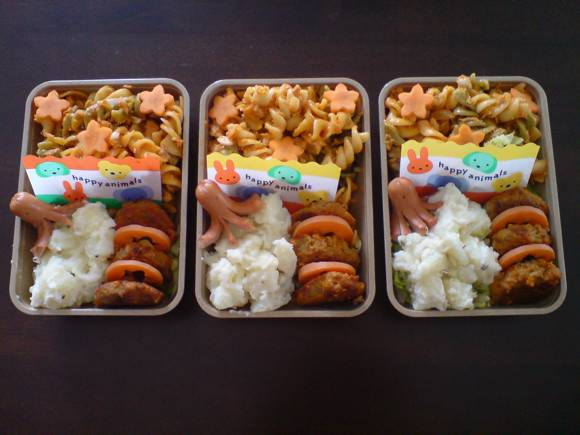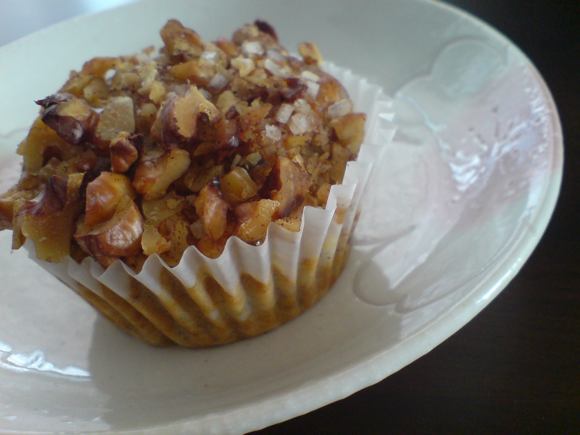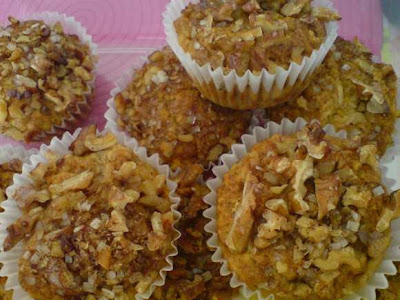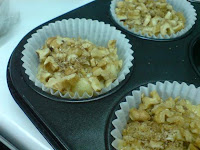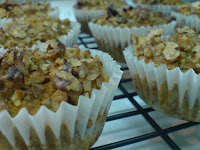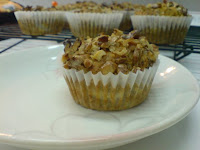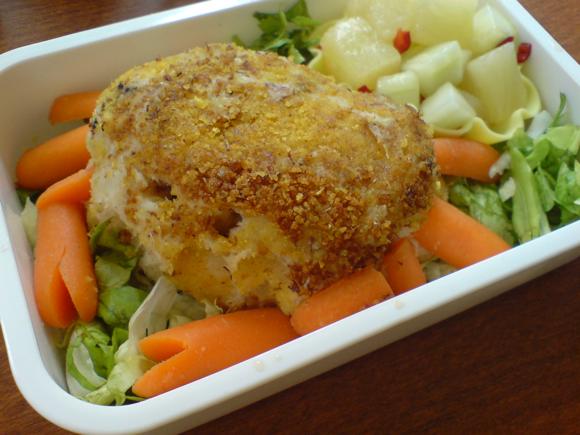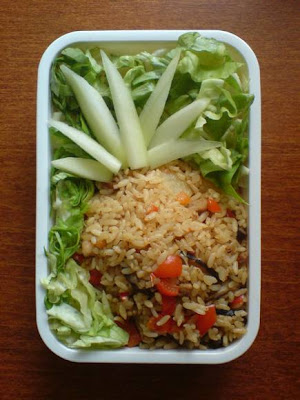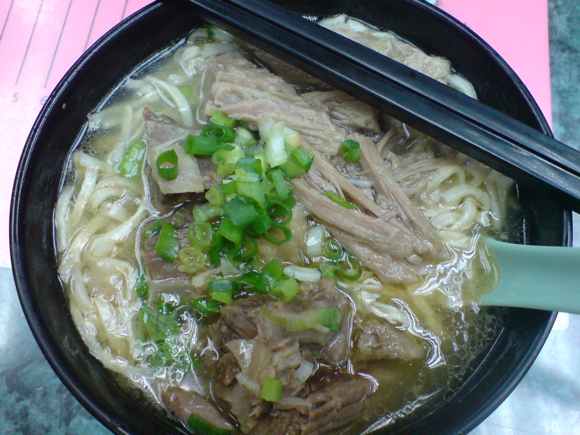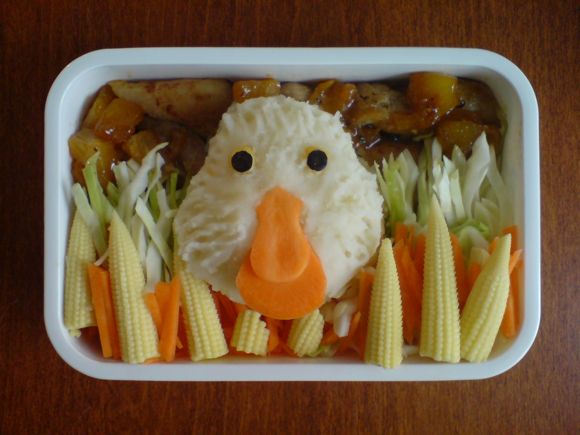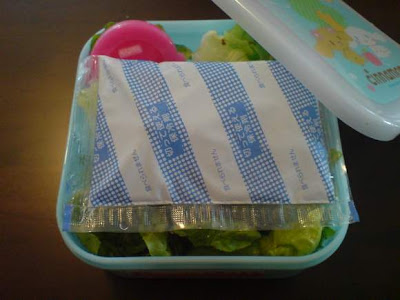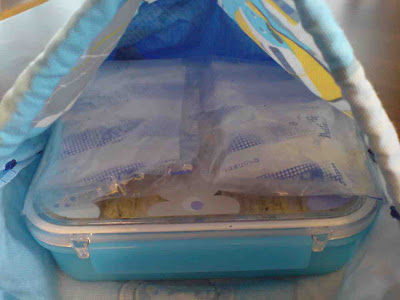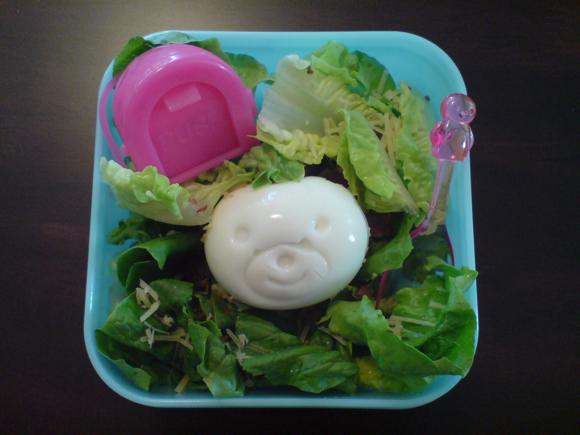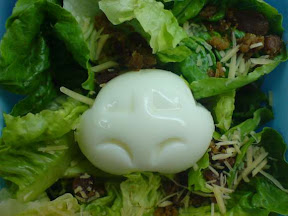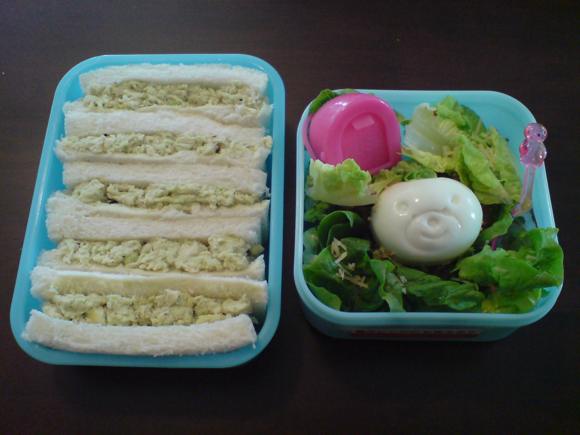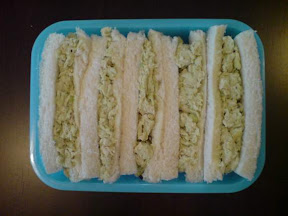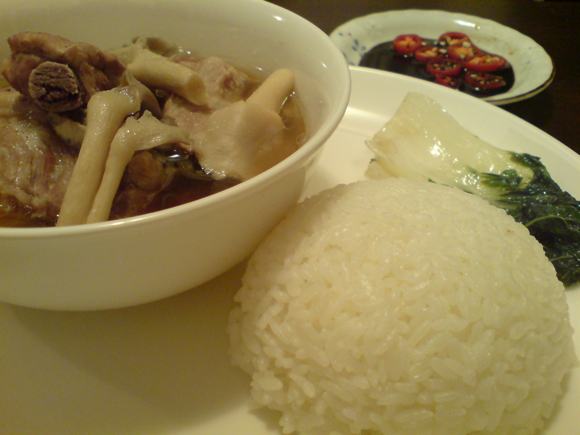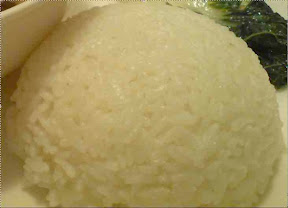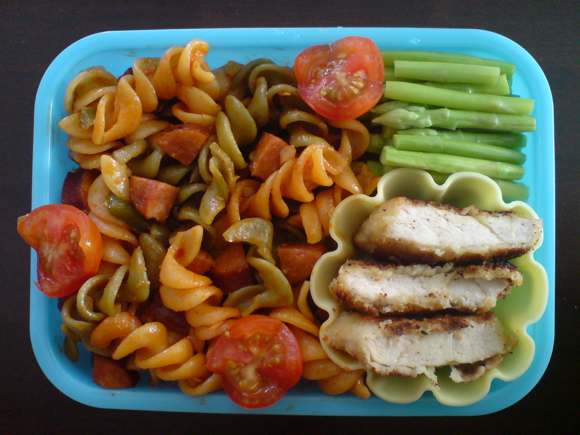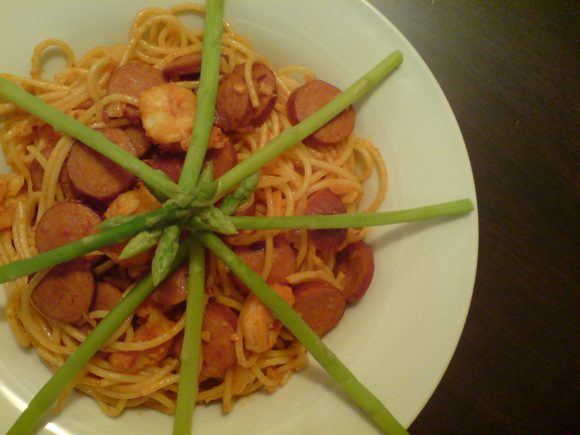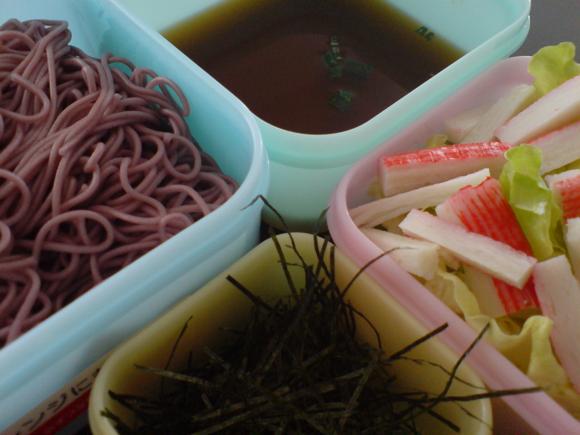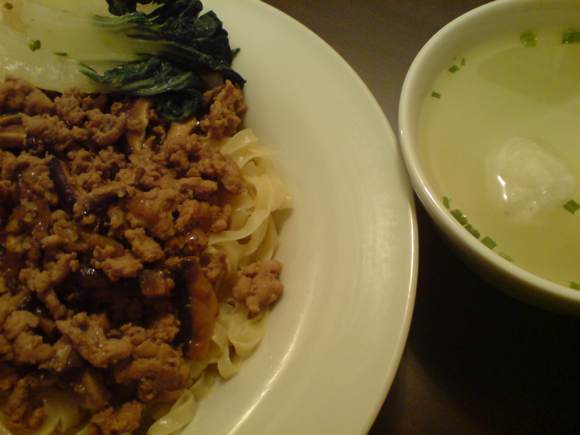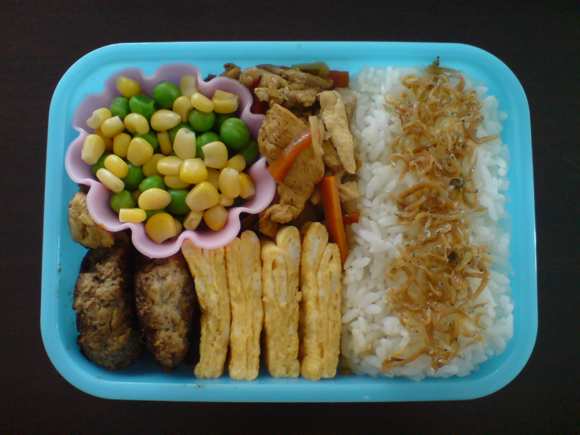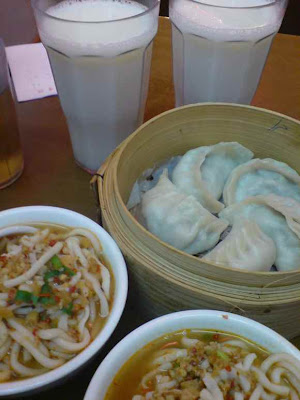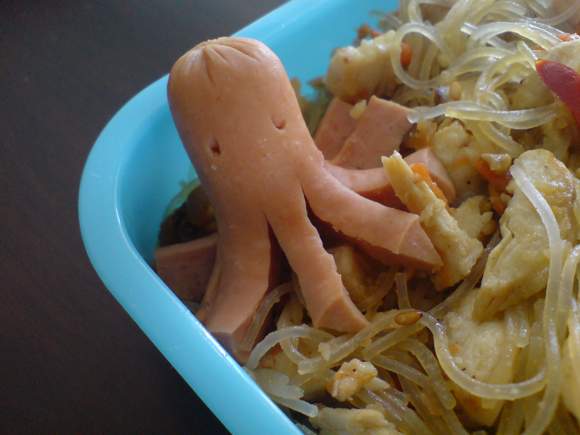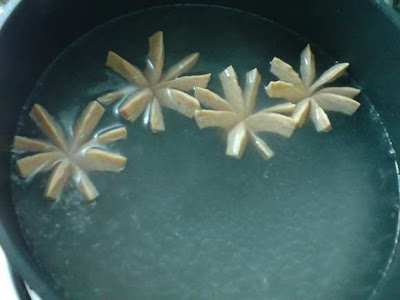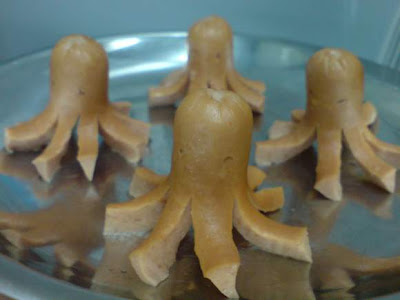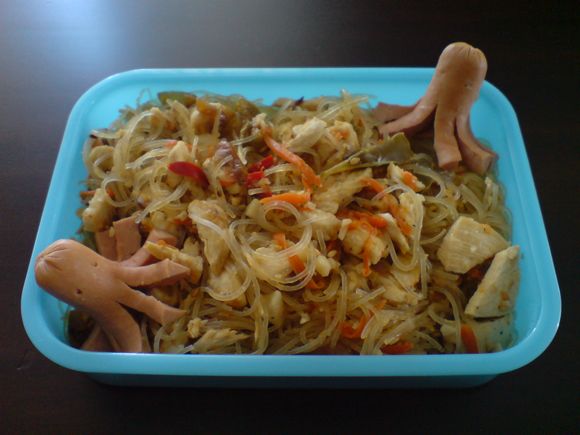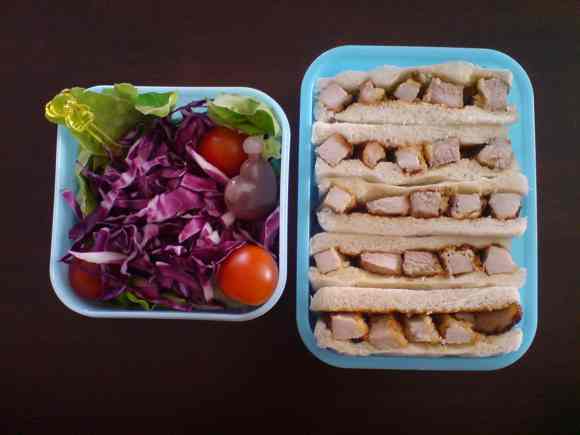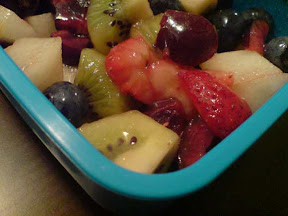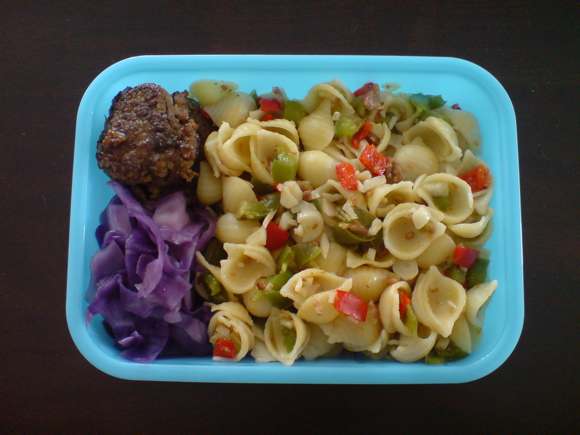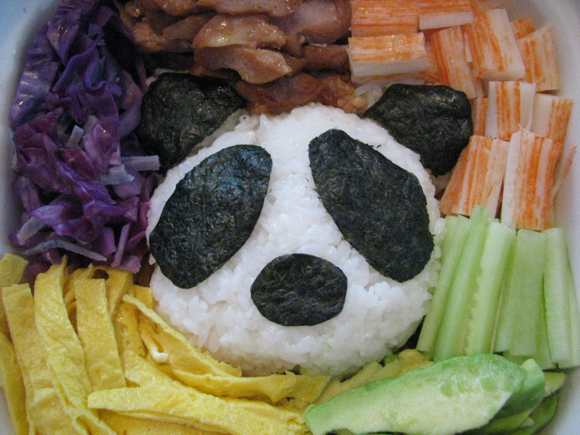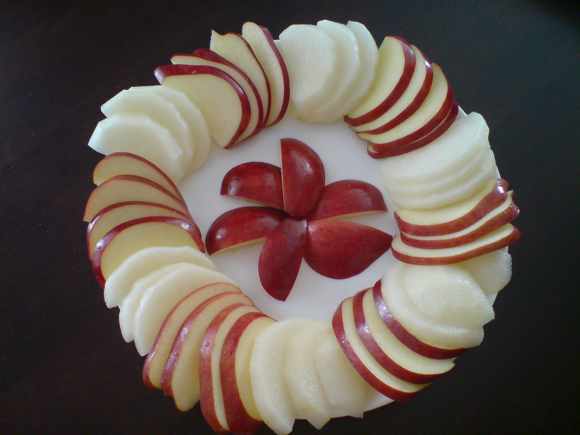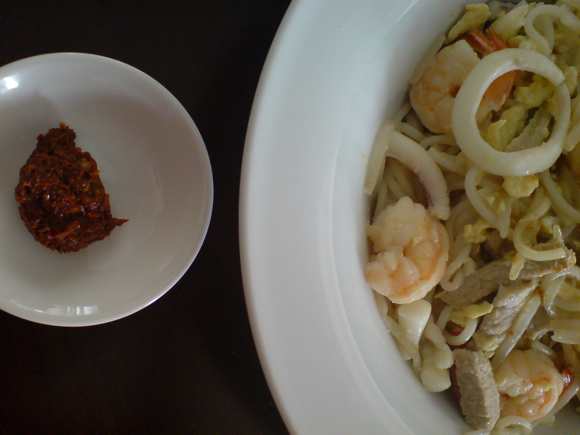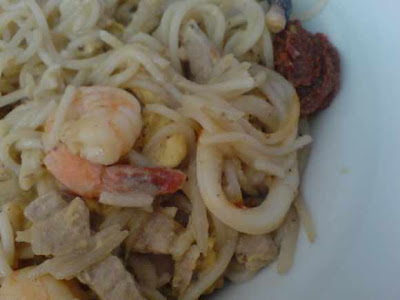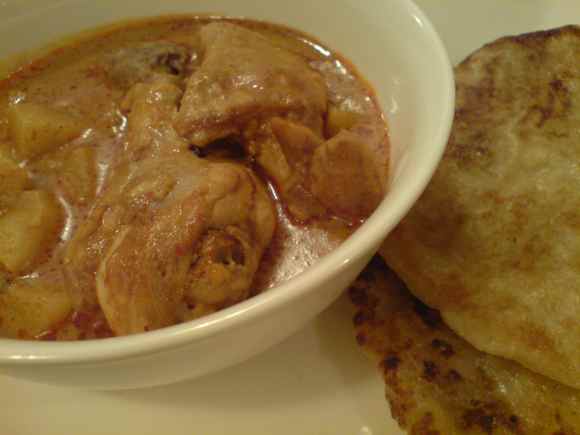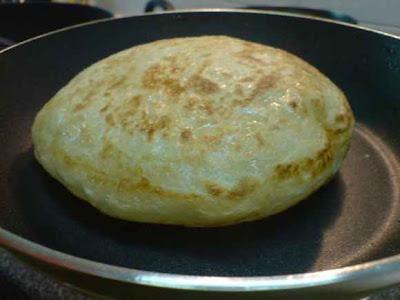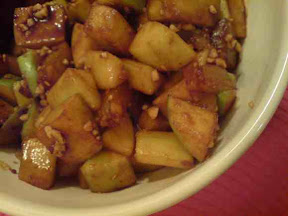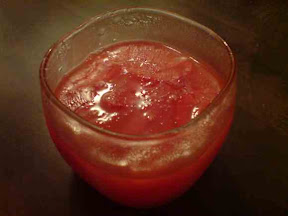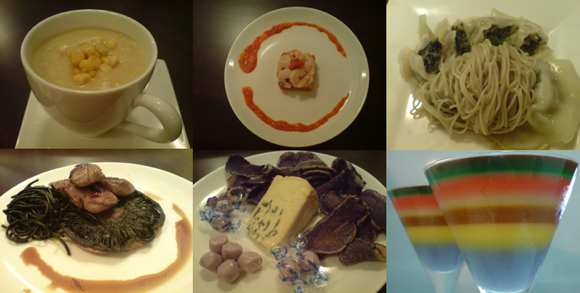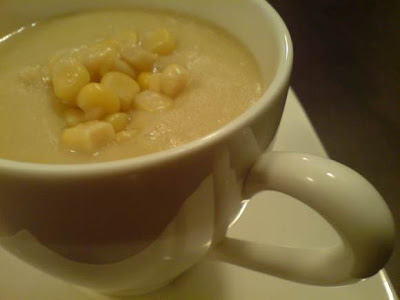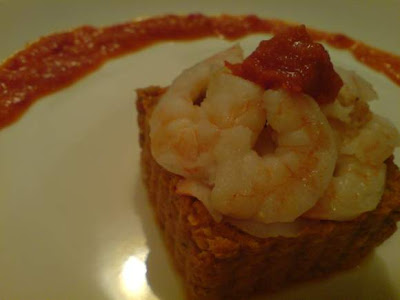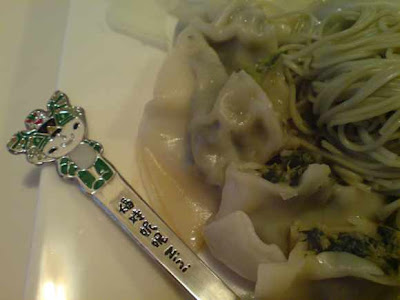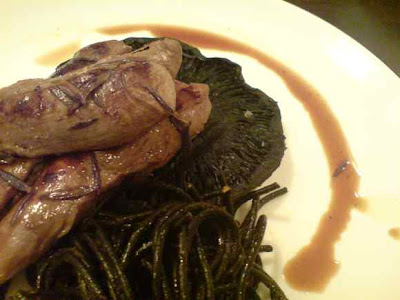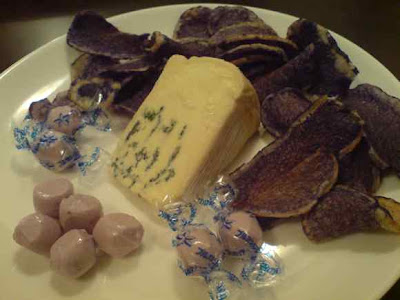To make this bento-making a little more fun and challenging, the next series of bentos will be entitled "One Week of Pineapple".
Here is #1 of the series - Pineapple Orange Chicken & "Duck" Bento.
The bento contains braised chicken thighs in a tangy, slightly sweet sauce, potato and corn salad, and a cabbage, carrot and corn coleslaw.
Pineapple rarely appears in meals I cook or eat, apart from the ol' Hawaiian Pizza, so I decided to select it for my new themed series.
The first pineapple recipe featured is actually one of my favourite ways of cooking chicken (yes, this contradicts my earlier statement!). I discovered this recipe on one of those free supermarket recipe brochures many years ago, and it works really well. The original version braises boned chicken thighs, but for this bento version, I've used deboned chicken thighs for a faster cooking time. The sauce is also made first, so the chicken doesn't overcook.
Pineapple Orange Chicken
2 deboned chicken thighs
around 150g canned pineapple, including the juice (I had a 300g can of pineapple. I used half the pineapple, but all the juice from the can)
around 100ml orange juice
around 100ml water
2 tsps soya sauce
1 small piece cinammon bark
freshly ground black pepper
Heat up a saucepan on medium heat, and add the pineapple, pineapple juice, orange juice, soya sauce, cinammon bark and some black pepper. Keep the mixture at a steady boil to reduce the liquids. Stir the mixture every now and again. Add around 100ml water when the mix starts to dry up, and continue until the mixture has been reduced and is quite thick.
In a separate frying pan, add a little bit of oil, and pan fry the whole chicken thighs until brown (it need not be totally cooked through at this stage). Add the chicken to the bubbling sauce mixture, and mix over medium heat. Ensure the chicken is well coated in the sauce and remove from the heat to cool once fully cooked through (the juices should run clear without any trace of red/pinkness). I find the meat is tender enough to be cut into smaller pieces with the spatula I use to fry the chicken, but you may prefer to cut it up into pieces after removing it from the saucepan.
Cool a little before putting the chicken into the bento. This chicken is good accompanied with potatoes or rice.
Mashed Potato & Corn Salad
Peel 2-3 potatoes, dice them into smaller pieces, then boil in water until soft. Drain, then mash the potatoes with a little water (if dry). Add around 4 Tbsp corn kernels, 1 -2 Tbsp mayonnaise (add more or less according to taste), as well as some freshly ground pepper and dash of salt. Mix well, and season further with mayonnaise, pepper, salt if needed. Set aside to cool.
Mr Duck
Using two tablespoons, scoop up some mashed potato & corn salad and shape it roughly into a ball. Place the potato ball into the bento, and use the back of the spoons to shape the head and smooth the potato.
Peel part of a carrot, and slice down vertically to create 3-4 mm thick slices. Cut out a duck-shaped beak from this slice. Arrange on top of the potato head and use two corn kernels for eyes. Cut out two small circles of nori (seaweed) and place them over the corn kernel eyes. Using a fork or chopstick, make streaks in the potato to make a feathery pattern.
Salad
The salad used in this bento was shredded cabbage and carrot. Pack some additional mayonnaise in a squeeze bottle for a simple coleslaw, or just eat it plain. I also added some boiled baby corn for added sweetness and decoration value.
I found that the sweetness of the cabbage and carrot needed no further dressing. In addition, if you eat it with mouthfuls of the potato salad, the taste of the mayonnaise in the potato provides the vegetables with a sufficient mayonnaise taste.
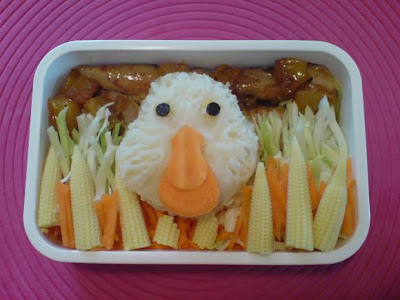
Back
